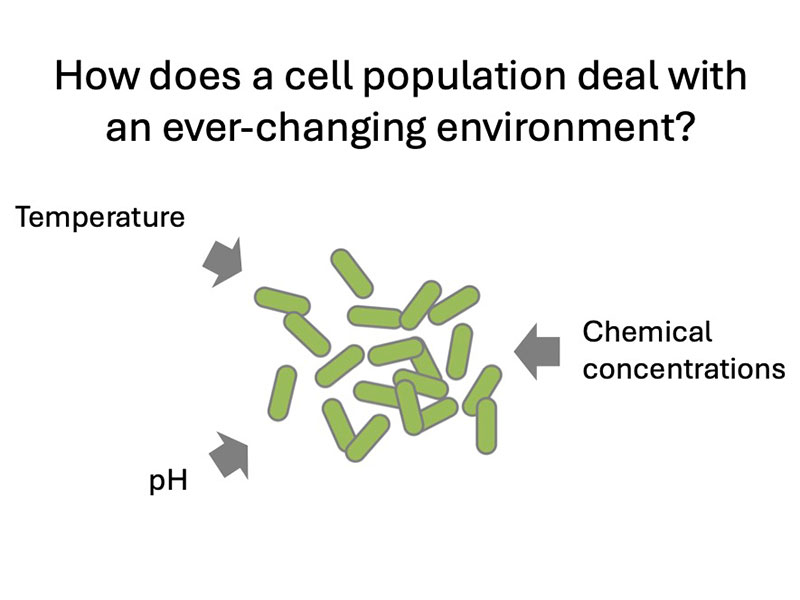Signal integration and adaptive sensory diversity tuning in Escherichia coli chemotaxis
Dr. Keita Kamino - July, 2024
Natural environments surrounding cells are highly complex, containing multiple chemical species whose concentrations dynamically change. How does a population of cells deal with such unpredictability in environmental conditions? We addressed this question using the E. coli chemotaxis pathway as a model, a system through which E. coli cells sense and process environmental chemical signals. Our previous work (Kamino et al., 2020, Sci. Adv.) revealed that a population of cells can adaptively modulate not only their average phenotype but also their phenotypic diversity, depending on the environmental uncertainty. But what if there are multiple chemical species in the environment? We extended our previous work to two-signal environments. To our surprise, we discovered that the cells can independently process information about two distinct chemicals using a single signaling pathway. Through mathematical modeling, we elucidated the molecular mechanisms behind this adaptability. Such orthogonal diversity tuning may prevail across cell signaling systems.
